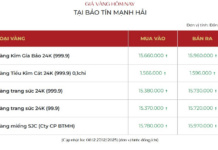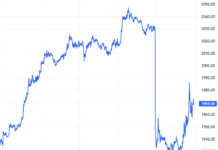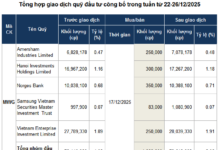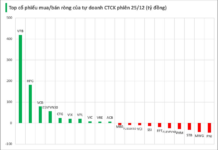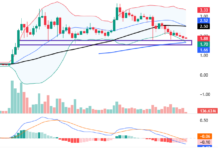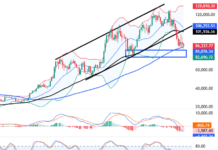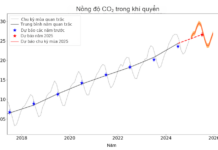This recommendation was made by many experts at the Conference on “Promoting Seafood Consumption for Domestic Needs,” held by the Ministry of Industry and Trade in coordination with relevant parties in early August in Ho Chi Minh City.
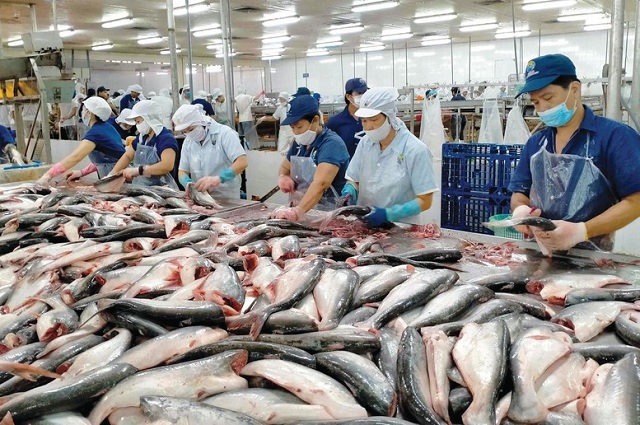
Experts recommend that seafood businesses need to pay attention to and better exploit the domestic market.
|
The domestic market still has a lot of potential
As one of the world’s leading seafood exporters, Vietnam is currently leaving its home market untapped. Products from businesses in the industry currently account for only about 60-70% of the market share in distribution channels.
According to the Ministry of Industry and Trade, in the context of unpredictable fluctuations in the global export market, the domestic market of over 100 million people could be a strategic solution for the stable and sustainable growth of Vietnam’s seafood industry if effectively exploited.
Sharing this view, the Vietnam Association of Seafood Exporters and Producers (VASEP) believes that the domestic market is increasingly affirming its strategic role in the sustainable and long-term development of businesses. Combining domestic consumption with exports can help businesses optimize costs and raw materials, thereby increasing competitiveness.
Exporters face challenges in the domestic market
Despite the potential, domestic businesses struggle to find their footing in the home market. According to Mr. Nguyen Thanh Nam, Deputy Director of the Department of Domestic Market Management and Development under the Ministry of Industry and Trade, the scale of the domestic market reaches about 1 billion USD, but imported seafood accounts for 40%.
In reality, many well-established exporters with a strong presence in the international market find it challenging to compete in the domestic market. The reason, as reflected by many businesses, is that their products sold in the domestic market, meeting export standards, are about 20% more expensive and cannot compete with other products, especially in traditional markets.
Explaining this, Mr. Vo Tran Ngoc, Sales Director of Saigon Co.op, analyzed: The seafood sector in the domestic market, especially in the supermarket channel, has great growth potential due to the increasing domestic consumption demand. However, the consumption of domestic seafood is still low compared to its potential due to some reasons, including the competition with traditional markets. The quality of seafood in small, unregulated markets is often uncertain and of unknown origin, hence the lower prices. Consumers are used to buying shrimp and fish from these markets, while supermarkets offering similar products with controlled quality are not prioritized due to higher prices.
In addition, according to experts, the lack of connection between production and distribution also disrupts the value chain of the domestic seafood industry, failing to take full advantage of the home market.
Supporting businesses to stimulate domestic market consumption
Given this situation, Mr. Tran Huu Linh, Director of the Department of Domestic Market Management and Development under the Ministry of Industry and Trade, said that the Government has directed the Ministry of Industry and Trade to develop a proposal to stimulate the domestic market, focusing on increasing the proportion of Vietnamese goods, including seafood, in distribution and retail systems and consumption channels. To achieve this, the Ministry of Industry and Trade has actively coordinated with relevant units, connecting production and market and supporting the links in the commodity chain.
At the same time, seafood businesses need to change their mindset and focus on researching and better exploiting the domestic market, while distributors should prioritize Vietnamese seafood in their systems. The Ministry of Industry and Trade, as a bridge between production and consumption, will continue to support businesses in effectively exploiting the domestic market, emphasized Mr. Linh.
– 08:25 04/08/2025
“The EVFTA at Five: A $300 Billion Trade Boost”
After 5 years in effect, the EVFTA agreement has catalyzed bilateral trade to reach nearly $300 billion, propelling Vietnam to become the EU’s top trading partner in ASEAN and 16th largest in the world.
“Unleashing the Potential: Clearing Bottlenecks for a Robust Semiconductor Industry”
“Recognizing the pivotal role of the semiconductor industry in developing Vietnamese-based artificial intelligence, Prime Minister Pham Minh Chinh underscored the imperative of conducting a thorough analysis to assess accomplishments, shortcomings, underlying factors, and lessons learned to catalyze the advancement of the semiconductor industry.”
Establishing an International Financial Center in Vietnam: Local Communities and Investors Alike Are Ready.
The decision to establish an International Financial Center (IFC) in Vietnam is a testament to the country’s ambitious vision for the new era. This strategic move by the Government and the Communist Party of Vietnam aims to propel the nation forward, creating a powerful new impetus for development. The IFC is designed to be a magnet for domestic and international businesses, attracting attention and investment from across the globe.
Building a Startup Nation: Aspirations, Institutions, and Ecosystems
In the 21st century, where cheap resources and labor are no longer a competitive advantage, entrepreneurship, innovation, and human intellect have become the key drivers of economic growth. Transforming Vietnam into a startup nation is not just a strategic direction but an imperative. It is a dream that needs to be realized, and a national mission that goes beyond individual choice.









